Not many photo subjects will get my heart pumpin’ like one of the large falcons.
Yesterday morning I had several opportunities with an immature Peregrine Falcon along the Antelope Island causeway. The falcon was elusive as it hunted which is typical of the species – each time I drove the causeway I would find it in a different area or not find it at all. The other challenge was the light because it was cloudy early and after that the light was intermittent as the clouds slowly cleared out.
I’ve presented each of these ten images in the order they were taken. Thankfully the light eventually improves.
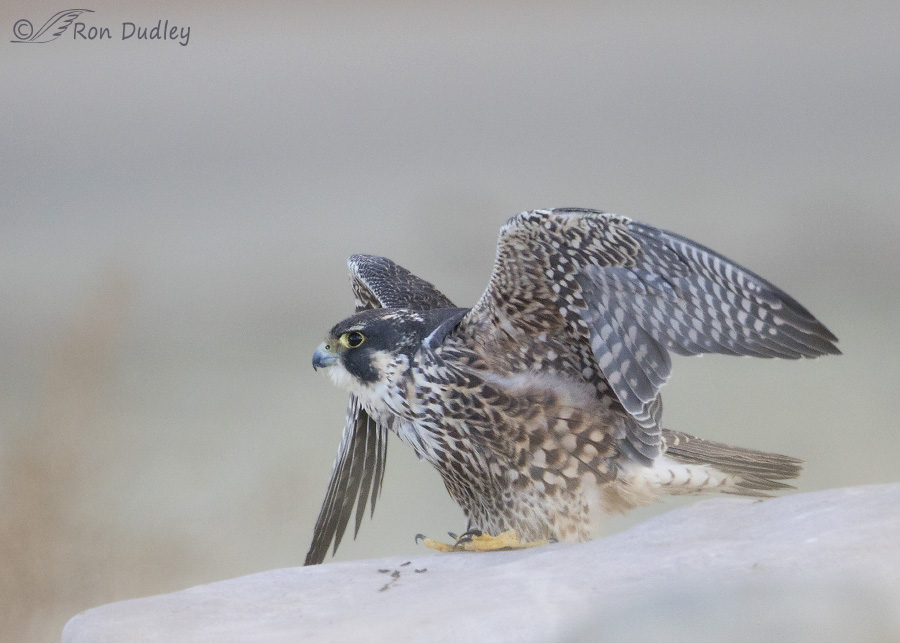
1/3200, f/5.6, ISO 1250, Canon 7D Mark II, Canon EF 500mm f/4L IS II USM + 1.4 tc, not baited, set up or called in
The light was awful when I got my first few chances with the bird. It typically hopscotched from perch to perch with short hunting flights in-between resting periods. While it was perched on this white rock its rump and tail were hidden behind the perch but it turned to give me a better view as it took off. This bird frustrated me at takeoff all morning because it always launched away from me. The one time it didn’t I lost focus on the bird just as it took off. Grrrr….
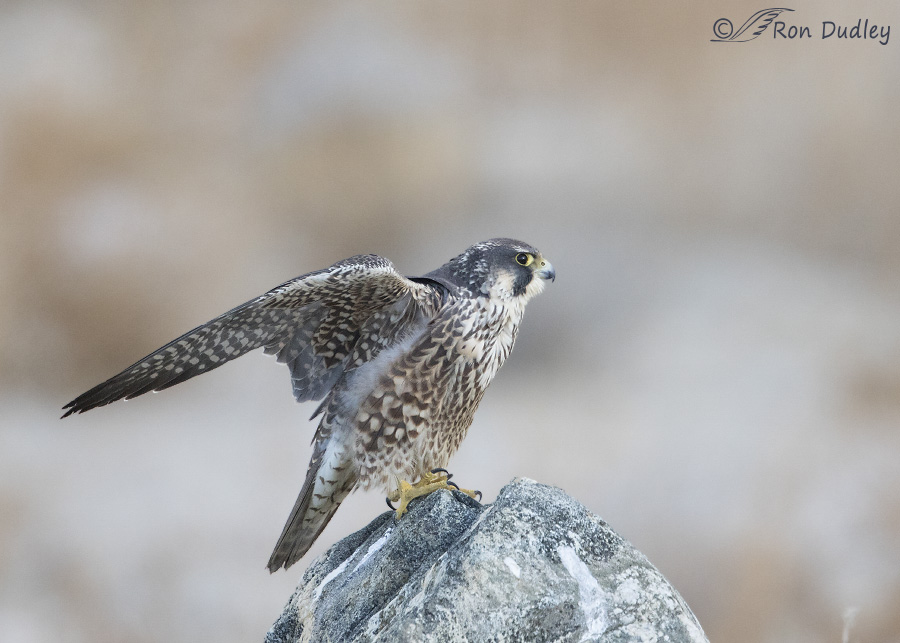
1/2000, f/5.6, ISO 1600, Canon 7D Mark II, Canon EF 500mm f/4L IS II USM + 1.4 tc, not baited, set up or called in
At first its tail was hidden on this perch too but eventually it turned to give me a better look and as it did so it opened a wing for stability.
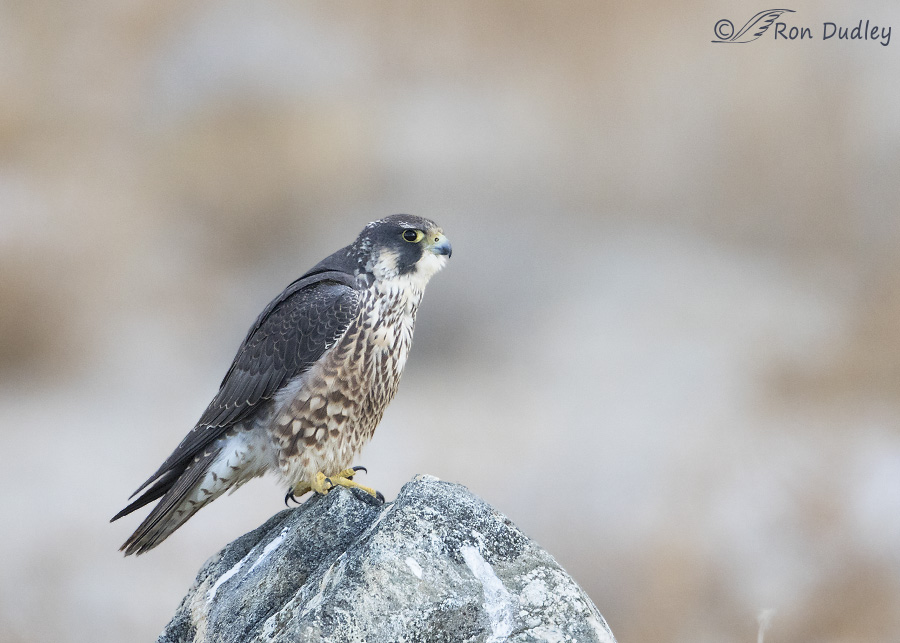
1/2000, f/5.6, ISO 1600, Canon 7D Mark II, Canon EF 500mm f/4L IS II USM + 1.4 tc, not baited, set up or called in
I thought this interesting rock was a big improvement over the white rocks it often perched on.
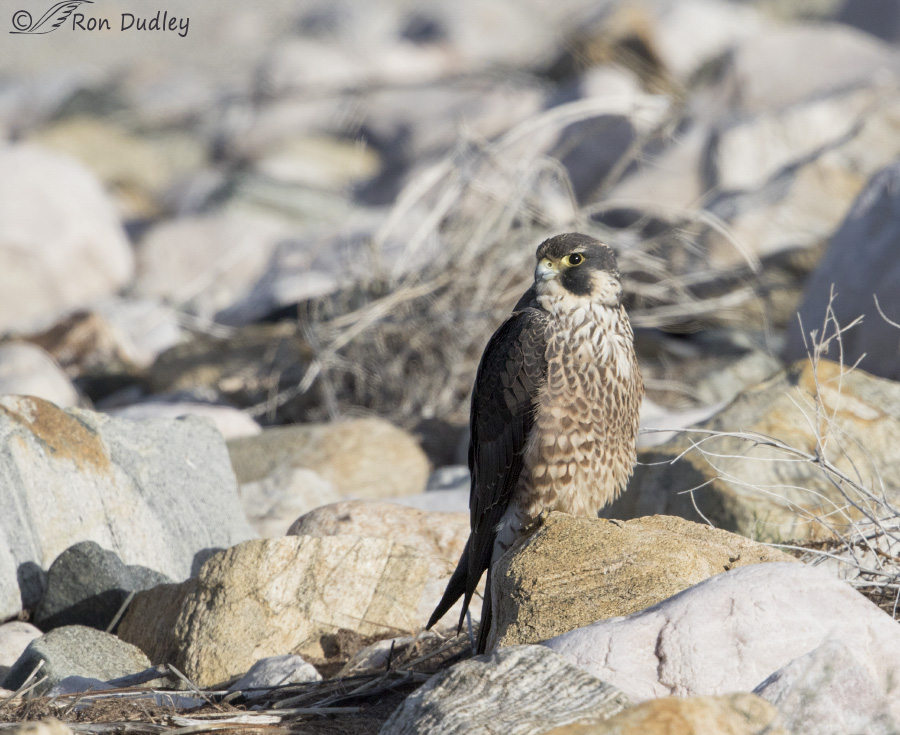 1/4000, f/6.3, ISO 500, Canon 7D Mark II, Canon EF 500mm f/4L IS II USM + 1.4 tc, not baited, set up or called in
1/4000, f/6.3, ISO 500, Canon 7D Mark II, Canon EF 500mm f/4L IS II USM + 1.4 tc, not baited, set up or called in
By the time I found the falcon again the light was finally beginning to improve. This juvenile was less skittish than adults usually are and it seemed to tolerate the traffic on the causeway pretty well.
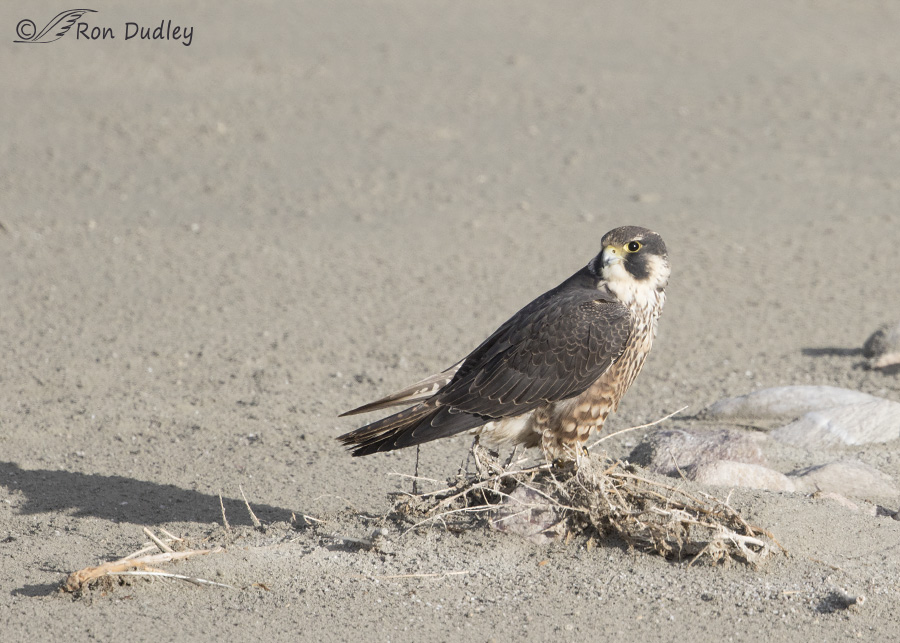
1/4000, f/6.3, ISO 640, Canon 7D Mark II, Canon EF 500mm f/4L IS II USM + 1.4 tc, not baited, set up or called in
Next it perched out on the mudflats a little further away from the road. It felt quite comfortable there…
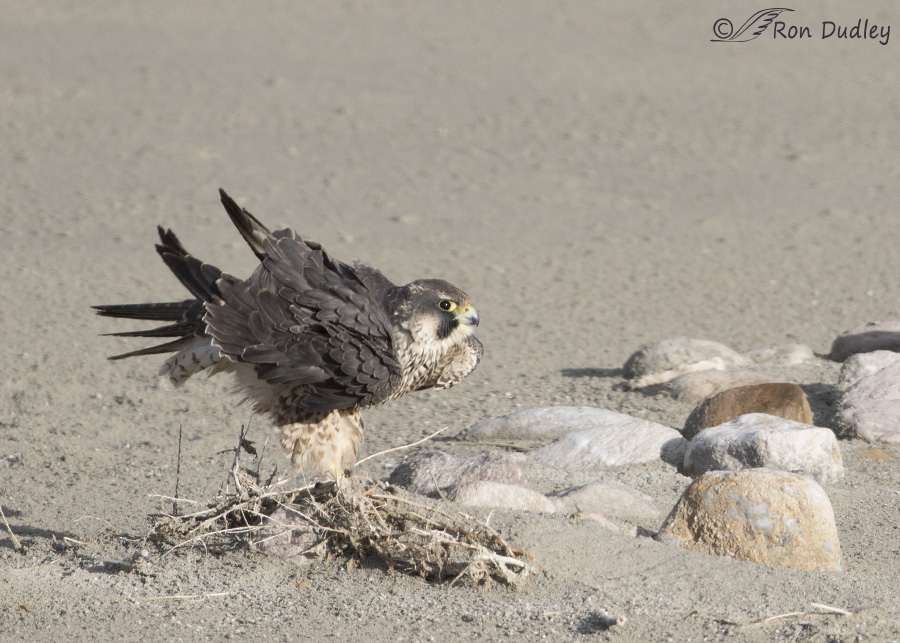
1/4000, f/6.3, ISO 640, Canon 7D Mark II, Canon EF 500mm f/4L IS II USM + 1.4 tc, not baited, set up or called in
and gave me a few rousing (feather shaking) poses that I like, even at this distance.
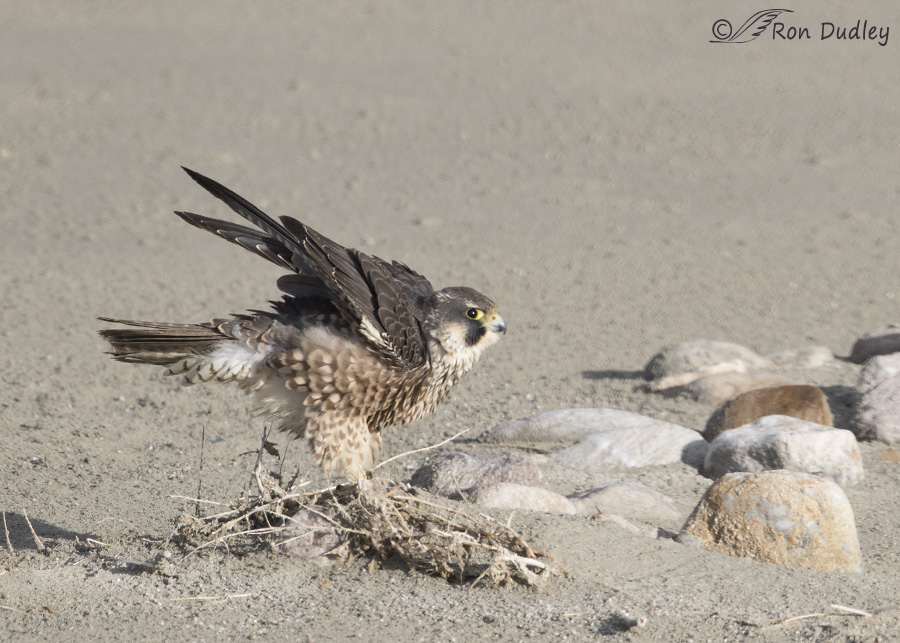
1/4000, f/6.3, ISO 640, Canon 7D Mark II, Canon EF 500mm f/4L IS II USM + 1.4 tc, not baited, set up or called in
In this one I like the wing position and the texture of the side and flank feathers but once again…
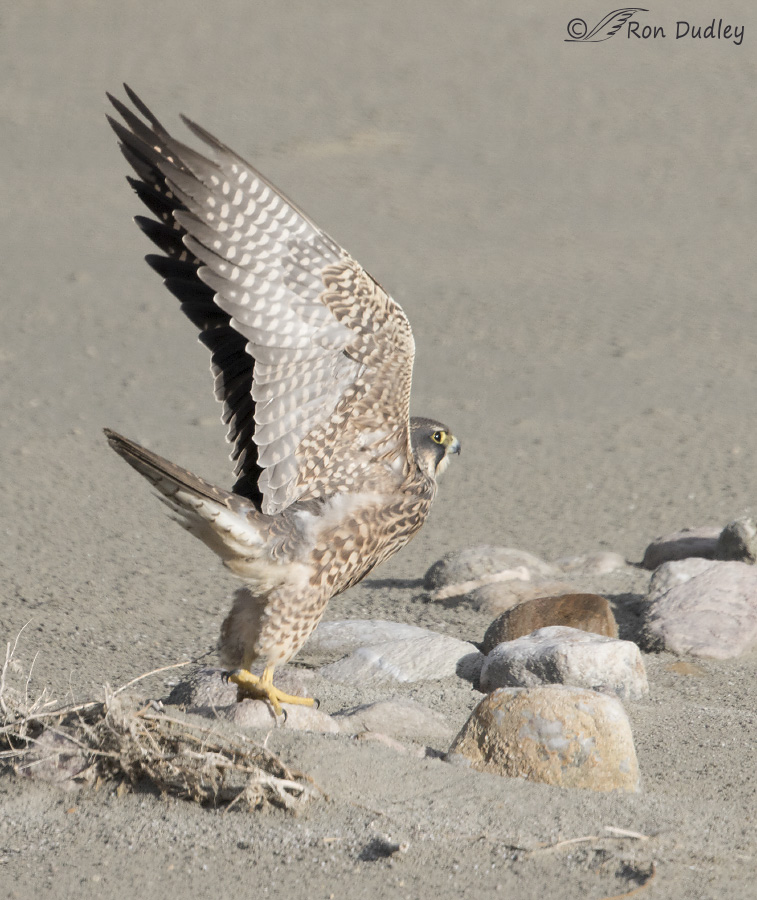
1/4000, f/6.3, ISO 640, Canon 7D Mark II, Canon EF 500mm f/4L IS II USM + 1.4 tc, not baited, set up or called in
the falcon took off mostly away from me. At least I got a look at the head and eye and I like the take-off posture.
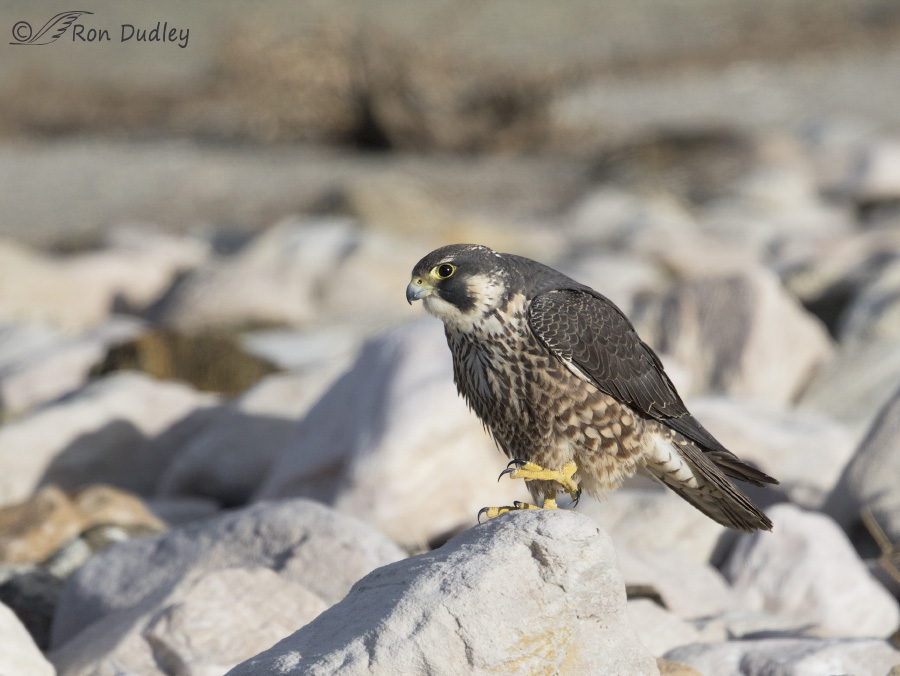 1/4000, f/6.3, ISO 500, Canon 7D Mark II, Canon EF 500mm f/4L IS II USM + 1.4 tc, not baited, set up or called in
1/4000, f/6.3, ISO 500, Canon 7D Mark II, Canon EF 500mm f/4L IS II USM + 1.4 tc, not baited, set up or called in
This is the closest I was able to get to the falcon in good light. I chose to post this image because I like that scary-looking raised foot.
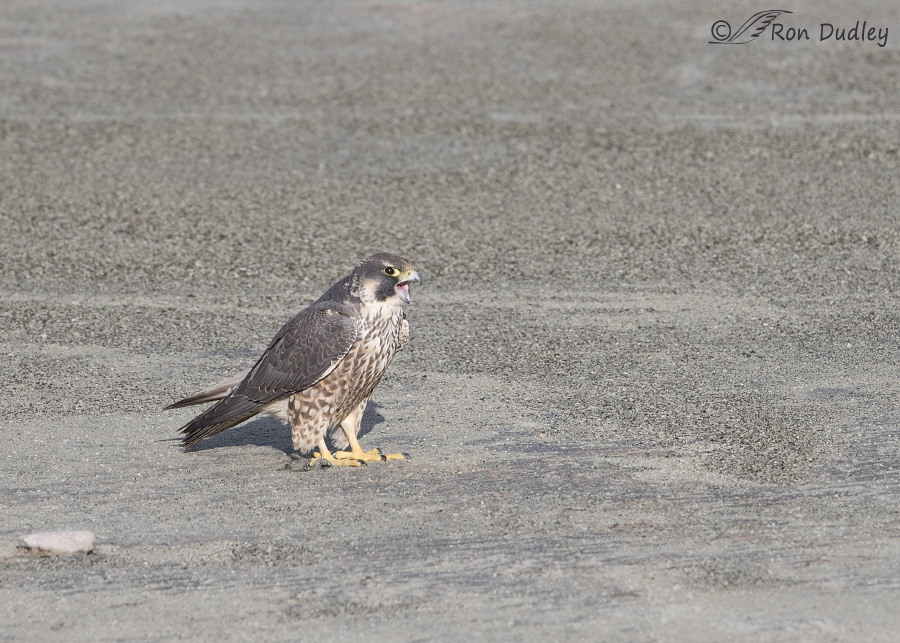
1/4000, f/6.3, ISO 800, Canon 7D Mark II, Canon EF 500mm f/4L IS II USM + 1.4 tc, not baited, set up or called in
The last time I found the bird it was far out on the mud flats. Here it’s yawning, seeming to indicate that it was becoming bored with the presence of my silver pickup.
It’s been a very long time since I’ve been able to photograph a Peregrine and I enjoyed the hell out of these encounters. Maybe one day I’ll find it with prey.
Ron


Great sequence Ron! I’m doing a winter survey this weekend from Farmington to Garr Ranch and will keep an eye out for this youngster. It’s eye ring, cere and feet are yellowing up quickly for such a young bird. It’s particularly noticeable in that cool shot of it’s yeti foot appearing to stomp the rock.
Ron, what a pleasure your blog and photos are! Thanks to Laura C. for commenting on your photography! If not for her postings about your photos, I would not have known of you and would not be enjoying 2 of my favorite things…photography and birds! Just awesome images and so informative. Shout out to Laura.
Prayers for your beautiful daughter and your family, you all are in my thoughts and prayers.
Also, the raptors are my favorites too!
SUCH a privilege for you (and us) to see.
Snickering at the range comments. As if they care where we think they will be.
I am very, very pleased to have introduced other people into the joys of britches…
EC, I was looking at range because I wanted to know if there would be a chance to see this bird. I’m sure they don’t care but sometimes some of us do care where they are.
I am sorry Susan. I did know that, but have been caught (often) when birds simply refuse to follow the rules. And lots of us care where they are.
EC, I’m actually glad that birds ignore range maps. This past summer I saw four different – and new to me – shore birds that should not have been where they were at the time I saw them – based on range maps. I found myself both enjoying them and being concerned for them because it was during breeding season and they were not anywhere near their known breeding grounds. Hope springs eternal in me for seeing birds like the Peregrine Falcon…
“LBJ’s” and “britches” are a permanent paet of my bird appreciation vocabulary…I know genius when I hear it…!
“the joys of britches”
You’ve contributed to my own appreciation of britches, EC. Thanks for that.
What a beautiful bird–how fortunate for all of us that you were able to catch these shots of a single individual displaying so many behaviors. I think I’m so enamored of your work because it shows (generally) healthy wild raptors (and others) doing their thing in their natural environment–so much better than the often sad outcomes for the injured birds I see close-up at the Ojai Raptor Center. Thank you!
Chris, I have some idea of how many sad situations you must see at the raptor center so I can imagine how refreshing it is for you to see healthy ones in the wild, even if it’s just in my photos.
I totally enjoyed your encounter with this beauty as well! Thank you so much for your work, Ron. It really is a treat to have you sharing your experiences, talent and love of wildlife with us.
Thanks for the very kind words, Suze.
How exciting! wonderful shots Ron! Thanks for sharing!
Charlotte
Thank you, Charlotte.
Wonderful series, Ron! I occasionally get a fleeting glimpse of one, but have never seen one like this! Incredible shots.
My glimpses of them are often fleeting too, Jane – and from very far away. That’s where a super-telephoto lens comes in handy.
What a gorgeous bird! When I’ve seen shots of this bird here or on Mia’s blog, the first thing I think of is that the markings around the face remind me of American Kestrels and Prairie Falcons. I checked my bird guides, and that seems to be characteristic of all falcons except one (the Caracara). Then I checked to see if we might have them in my area, and have discovered a major frustration with bird guides: I have 3 (Sibley, Peterson, and National Geographic) and each of them has a different range for the Peregrine. They range from showing no presence, to winter, to year ’round. The Hueco Tanks bird list shows it as accidental. Given that I’ve suddenly started seeing owls at Hueco Tanks, I’ll keep my eyes open for Peregrine Falcons. Just in case. Thanks for showing us how beautiful this bird is.
I share your frustrations with range maps, Susan. I think part of it is inaccuracy, part is changing ranges due to environmental factors (climate change, etc) and part is because birds don’t read range maps to find out where they’re supposed to live…
I, too, appreciated #7 for its clear display of patterning and overlay of the flank feathers—I do appreciate these series of shots you often take which go beyond
the “beauty shots” and contribute so much to anatomical understanding .
Thanks for that observation, Kris. “Anatomical understanding” is part of the fun of birds, isn’t it?
Some nice shots of the ” britches”, too….
Ha, you beat Elephant’s Child to it again, Patty…
Ron: Excellent pics as always. You really kept the noise down in your photos…especially on the first ones that had poor lighting. I shoot the same gear and glass, but struggle with noise (even though my settings are right in line with what yours are). Any suggestions on how to keep the noise down? Also, how much crop did you have to do? The bird is incredibly “clean” in all your photos. When I crop, my birds are often quite noisy unless I shot them somewhat close. Thank you for your thoughts on this…Zaph
Zaphir, I’m not sure why you would get more noise than I do since we shoot the same gear. One little trick is to not sharpen globally, only sharpen the bird (and sometimes the perch). Sharpening increases noise so do it to the entire image is often not a good idea, especially when the background and foreground is usually out of focus anyway.
Several of these images were cropped to 45% of the original image (from 20 MP to 9 MP) but some were cropped a little less than that. I was usually not particularly close to this falcon.
WOW!!! How lucky can you get! This is an amazing series…any one of these images would be a “Grand Prize”!…i think the third from the last is my favorte, because it shows the “tools” of a great hunter…the long, strong wings that allows them to fly so fast and those, big, strong talons that allow little chance of escape…then, in contrast, there’s the small, neat beak…almost?like it belongs on a kestrel…BEAUTIFUL!!!….Congratulations!!!
Thanks, Patty. It was a lucky morning for me. Couldn’t find the bird this morning though…
Just love peregrines. They’re just so pretty and you caught a wonderful series. Thank you. Raptors, overall, delight my soul with everything they do!
I’m aware of how much you love raptors, Laura – that’s obvious from your FB posts and from your devotion to your own birds. I share the feeling.
In the third shot, you seem to be getting the “hairy eyeball” look.
The bird looks suspicious of me, doesn’t it, Arwen?
I would love to develop a monologue coming from this Peregrine for each shot you are showing, of course that would be if they could think like humans. VBG
I love the pictures and found them both interesting, informative and comical.
I can just imagine the fun and excitement you had taking these images, nicely done!!
I had a blast with this bird, Dick – it was great therapy. I’ll bet your monologue would be fun to read.
WOW! Good sequence. Love the feather detail/coloring and the foot raised to show the talon is great as is the yawn.
Love the feather detail/coloring and the foot raised to show the talon is great as is the yawn.  Wonderful distraction and accomplishment for you to be able to work with these birds.
Wonderful distraction and accomplishment for you to be able to work with these birds.
This bird gave me a lot of variety in poses over the time I spent with it, Judy. It was a fun morning.
Great sequence Ron. I love the feather shaking pose (#7). I am always astounded and intrigued by feather coloration and patterns!
“I am always astounded and intrigued by feather coloration and patterns”
Me too, Nancy. They can even look very different in the same bird under different conditions and light angles.
Ron, nice look at those talons. Seeing birds rouse is always special for me. Thanks for that view.
I enjoy birds when they rouse too, Diana. It’s surprising how much shutter speed you often need to get those moving feathers sharp though…